Vietnam is one of the most amazing destinations in Southeast Asia, with a rich history, a vibrant culture, and a breathtaking scenery. Whether you want to explore the ancient temples, the colonial towns, the majestic mountains, the green rice terraces, the fertile delta, or the sandy beaches, Vietnam has something for you. But with so much to see and do, how do you choose where to go and what to prioritize? Don't worry, we have got you covered. In this ultimate Vietnam travel guide, we will introduce you to the 17 best places to visit in Vietnam, each with its own charm and appeal.
You will learn about the highlights, attractions, and tips for each destination, and how you can experience them with our Vietnam tour packages. By the end of this guide, you will have a clear idea of what to expect from your Vietnam trip and how to make the most of it. Let's get started!
- Hanoi: An Immersive Blend of Culture, History, and Adventure
- Halong Bay: A Surreal Seascape Brimming with Cultural Treasures
- Sapa: A Trekker's Paradise in Vietnam's Misty Mountains
- Ninh Binh: Vietnam's Enchanting Land of Beauty and History
- Da Nang: The Vibrant and Dynamic Coastal City of Vietnam
- Phong Nha-Ke Bang National Park
- Hue Imperial City
- Hoi An: The Charming Ancient Town of Vietnam
- Phu Quoc: The Tropical Paradise Island of Vietnam
- Ho Chi Minh City
- Mekong Delta
- Da Lat
- Nha Trang: The Vibrant Beach City of Vietnam
- Places to Visit in Vietnam Off the Tourist Trail
Hanoi: An Immersive Blend of Culture, History, and Adventure
Hanoi, Vietnam's vibrant capital, beckons travelers with its captivating blend of rich heritage and modern energy. More than just a gateway to the country's natural wonders, this city offers an immersive cultural experience that will leave you enchanted.
Step back in time as you explore Hanoi's imperial landmarks, where centuries-old architecture whispers tales of Vietnam's storied past. The Imperial Citadel of Thang Long, a UNESCO World Heritage Site, invites you to wander through its sprawling complex, once home to ancient dynasties. Marvel at the Temple of Literature, Vietnam's first national university and a serene homage to Confucian learning, adorned with intricate gardens and pavilions.
Delve deeper into the country's history at the Ho Chi Minh Mausoleum, where you can pay your respects to the revered leader of Vietnam's independence movement. Nearby, the charming Old Quarter beckons with its labyrinth of narrow streets, bustling markets, and legendary street food scene, offering an authentic taste of Hanoi's vibrant culture.
To truly appreciate Vietnam's rich cultural tapestry, immerse yourself in the country's unique traditions and art forms. Catch a mesmerizing water puppet show, an ancient art where intricately carved puppets come to life on the water's surface, accompanied by live musicians. Visit the Museum of Ethnology to delve into the diverse customs and crafts of Vietnam's 54 ethnic minority groups.
For a hands-on experience, join a cooking class and learn the secrets behind iconic Vietnamese dishes like pho and bun cha. After mastering the art of Vietnamese cuisine, savor your creations alongside fellow culinary enthusiasts.
While Hanoi's urban charms are alluring, the surrounding landscapes offer a wealth of outdoor adventures. Embark on a kayaking or trekking excursion through the surreal limestone karsts of Halong Bay, a UNESCO World Heritage Site renowned for its breathtaking seascapes. Venture into the majestic Phong Nha-Ke Bang National Park, where you can explore vast underground cave systems, including the record-breaking Son Doong Cave.
For those seeking a closer encounter with nature, head to the picturesque hill town of Sapa. Here, you can embark on challenging treks through verdant valleys, rice terraces, and ethnic minority villages, immersing yourself in the region's rich cultural tapestry.
To make the most of your Hanoi adventure, consider the following tips:
- For outdoor enthusiasts, the drier months of September to November offer ideal trekking conditions and stunning landscapes.
- Families or those seeking a more budget-friendly experience may prefer visiting during the shoulder seasons of April-May or October-November, when crowds are thinner and prices are lower.
- Culture vultures can time their visit to coincide with vibrant festivals like the Mid-Autumn Festival (September/October) or Tet (Vietnamese New Year, typically in late January or early February).
- Utilize Hanoi's extensive public transportation network, including buses, taxis, and ride-hailing apps, for convenient and affordable exploration.
- Exercise caution when crossing streets, as traffic can be intense.
- Embrace the art of bargaining at local markets for an authentic shopping experience.
Recommended Itineraries:
- For a well-rounded introduction, consider a 5-7 day itinerary that combines Hanoi's cultural highlights with a Halong Bay cruise or a day trip to Ninh Binh.
- Adventure seekers can embark on a 10-12 day journey, starting in Hanoi and venturing to Sapa, Halong Bay, and Phong Nha-Ke Bang for trekking and caving expeditions.
- Immerse yourself in Vietnam's culinary delights with a 3-4 day food tour, sampling local specialties and joining cooking classes led by renowned chefs.
With its captivating blend of history, culture, and natural wonders, Hanoi promises an unforgettable experience that will leave you yearning to uncover more of Vietnam's treasures. Start planning your tailor-made Hanoi adventure today by contacting our travel experts at Vietnam Tour.
Halong Bay: A Surreal Seascape Brimming with Cultural Treasures
Imagine drifting through an ethereal wonderland, where towering limestone karsts rise majestically from emerald waters, their sculptural forms carved by nature over millions of years. Welcome to Halong Bay, Vietnam's crown jewel and a UNESCO World Heritage Site that will leave you spellbound.
With over 1,600 islands and islets dotting the bay, Halong Bay is a true geological masterpiece. Embark on a cruise and marvel at the breathtaking scenery as you glide past these ancient limestone formations, each one more captivating than the last. Venture ashore to explore hidden caves like the magnificent Sung Sot Cave, adorned with intricate stalactites and stalagmites that defy the imagination.
For the adventurous souls, kayak through the tranquil waters of Lan Ha Bay or Bai Tu Long Bay, where you'll find a serene escape from the crowds, surrounded by pristine landscapes and diverse marine life. Alternatively, hike through the lush forests of Cat Ba National Park, keeping an eye out for rare species like the golden-headed langur.
Beyond its natural wonders, Halong Bay offers a gateway into Vietnam's rich cultural tapestry. Visit a pearl farm and learn about the intricate cultivation process that has sustained local communities for generations. Join the skilled fishermen on a night squid fishing excursion and relish the fresh catch, cooked to perfection in traditional Vietnamese style.
For a true taste of Vietnam's ancient traditions, attend a mesmerizing water puppet show, where skilled puppeteers bring these intricate wooden figures to life on the water's surface, accompanied by live music and storytelling.
Halong Bay caters to a diverse range of travel styles, ensuring an unforgettable experience for every visitor:
- Cultural Immersion: Embark on a 4-day journey that combines a Halong Bay cruise with visits to local villages, cooking classes, and cultural demonstrations, offering an authentic glimpse into Vietnam's vibrant heritage.
- Outdoor Thrills: For the adventure-seekers, a 5-day expedition might include kayaking through hidden lagoons, trekking through pristine forests, and exploring the awe-inspiring cave systems of Phong Nha-Ke Bang National Park.
- Romantic Escapes: Couples can indulge in a 3-day luxury cruise, complete with private balcony suites, candlelit dinners, and rejuvenating spa treatments, creating the perfect romantic getaway.
- Family Fun: Opt for a 2-day family-friendly cruise, packed with engaging activities like squid fishing, beach excursions, and educational workshops on Vietnamese culture and wildlife.
While Halong Bay is a year-round destination, certain seasons offer distinct advantages:
- March to May: Mild temperatures and clear skies make for ideal cruising conditions, with fewer crowds and lower prices during the shoulder season.
- September to November: The fall months bring calm waters and vibrant landscapes, perfect for outdoor adventures like kayaking and trekking.
- December to February: Although cooler, the dry winter season offers stunning clear days and the chance to witness the bay's iconic misty landscapes.
No matter when you visit, our expert travel planners at Vietnam Travel can design a tailored Halong Bay experience that perfectly aligns with your interests and travel style. Contact us today to start planning your unforgettable journey through this ethereal seascape.
Sapa: A Trekker's Paradise in Vietnam's Misty Mountains
Nestled in the rugged Hoang Lien Son mountain range, near the Chinese border, Sapa is a breathtaking highland destination that promises an unforgettable adventure. With its rolling hills, terraced rice fields, and ethnic minority villages, this remote town offers a unique window into Vietnam's rich cultural tapestry and natural splendor.
For outdoor enthusiasts, Sapa is a true paradise. Embark on multi-day treks that wind through verdant valleys, past cascading waterfalls, and into remote hill tribe villages like Lao Chai and Ta Van. As you hike along centuries-old footpaths, you'll be rewarded with panoramic vistas of the Hoang Lien Son mountains, including the towering peak of Fansipan, Vietnam's highest summit.
For a more immersive experience, consider joining a guided trek led by knowledgeable local guides from the ethnic minority communities. They'll share insights into their unique cultures, traditions, and sustainable farming practices, allowing you to forge deeper connections with the land and its people.
Sapa's rich tapestry of ethnic minority groups, including the Red Dao, Black Hmong, and Tay, offers a wealth of cultural experiences for the inquisitive traveler. Venture into remote villages and witness the intricate craftsmanship of traditional textile weaving, or participate in a hands-on cooking class to learn the secrets behind authentic Vietnamese cuisine.
For a truly unique cultural immersion, time your visit to coincide with one of Sapa's vibrant festivals, such as the Bac Ha Market or the Love Market, where ethnic minorities gather to trade locally produced goods and celebrate their heritage through colorful dress, music, and dance.
Sapa's weather can vary greatly depending on the season, so it's essential to plan your visit accordingly:
- March to May: This spring season offers mild temperatures and clear skies, making it ideal for trekking and witnessing the vibrant colors of the blooming rice terraces.
- September to November: The fall months bring cooler temperatures and fewer crowds, perfect for those seeking a more peaceful and budget-friendly experience.
- December to February: While chilly, the winter season can be a magical time to visit, with the chance to witness Sapa's iconic "sea of clouds" and participate in traditional ethnic minority festivals.
For more information about Sapa weather and climate, check out our article about best time to visit Sapa.
To make the most of your Sapa adventure, consider the following itinerary options:
- Adventure Trekkers: A 5-7 day itinerary that includes multi-day treks through remote villages, visits to ethnic minority markets, and a side trip to the nearby Muong Hoa Valley or Fansipan Mountain.
- Cultural Explorers: A 3-4 day immersion into the rich tapestry of Sapa's ethnic minority communities, featuring village homestays, cooking classes, and opportunities to witness traditional crafts like textile weaving and embroidery.
- Family-Friendly: A 4-5 day adventure that combines easy day hikes, visits to local markets and farms, and interactive cultural experiences suitable for all ages.
Insider Tips for a Smooth Sapa Experience
- Pack Layers: Sapa's weather can be unpredictable, so be prepared with warm layers and waterproof gear for your treks.
- Respect Local Customs: When visiting ethnic minority villages, dress modestly and ask for permission before taking photographs.
- Stay in a Homestay: For an authentic cultural experience, consider staying in a traditional homestay and immersing yourself in the daily life of a local family.
- Book in Advance: Sapa's popularity means that accommodations and tours can fill up quickly, especially during peak seasons. Book your stay and activities well in advance to secure your preferred dates.
With its stunning natural beauty, rich cultural heritage, and endless opportunities for adventure, Sapa is a must-visit destination for those seeking a truly immersive and unforgettable experience in Vietnam. Start planning your tailor-made Sapa journey today with the experts at Vietnam Tour.
Ninh Binh: Vietnam's Enchanting Land of Beauty and History
While Hanoi, Hoi An, and Ho Chi Minh City steal the spotlight, Ninh Binh, a hidden gem south of Hanoi, offers a unique blend of cultural immersion, breathtaking landscapes, and historical intrigue. Often dubbed "Ha Long Bay on land," Ninh Binh boasts towering limestone karsts jutting out from emerald rice paddies, creating a dramatic yet serene scenery.
Ninh Binh's charm goes beyond the postcard-perfect landscapes. Immerse yourself in Vietnamese culture by taking a cooking class and learning the secrets of classic dishes like phở (noodle soup) or bánh mì (Vietnamese baguette). For a truly special experience, cycle through the countryside, stopping at traditional villages to witness rural life and perhaps even interact with local artisans.
Ninh Binh caters to adventurers as well. Embark on a boat tour through the Trang An cave complex, a UNESCO World Heritage Site, and marvel at the majestic limestone formations rising from the emerald waters. Kayak through the Van Long Wetland Nature Reserve, a haven for diverse birdlife, or rent a bicycle and explore the winding country roads, soaking in the tranquility of the rice paddies.
History buffs will find themselves captivated by Ninh Binh's ancient capital, Hoa Lu. Explore the ruins of temples built by the Vietnamese emperors and delve into the rich heritage of the region.
No trip to Vietnam is complete without indulging in its delectable cuisine. Ninh Bình offers a flavorsome array of dishes, including goat meat hot pot, cơm cháy (crispy rice), and nem cua bể (tiny spring rolls filled with crabmeat). Be sure to pair your meal with a cup of strong Vietnamese coffee.
Ninh Binh is a year-round destination, but the best time to visit depends on your preferences. For comfortable weather and fewer crowds, aim for spring (February to April) or autumn (September to November).
Exploring Ninh Binh can be easily incorporated into a larger Vietnam itinerary. Here's a suggestion:
- Spend 2-3 days in Ninh Binh, exploring the caves, temples, and rice paddies.
- Combine your Ninh Binh visit with a trip to Hanoi (1-2 days) to experience the vibrant capital city.
- If you have more time, consider venturing to Ha Long Bay (overnight cruise) or Sapa (trekking in the mountains) for a more diverse Vietnam experience.
Ninh Binh offers something for everyone, from nature enthusiasts and history buffs to adventure seekers and cultural explorers. With its captivating beauty, rich history, and warm hospitality, Ninh Binh promises an unforgettable experience in the heart of Vietnam.
Da Nang: The Vibrant and Dynamic Coastal City of Vietnam
Da Nang is a strong contender for the title of "best place to visit in Vietnam." This vibrant city boasts a stunning coastline with beaches like My Khe, perfect for relaxation and water sports. But Da Nang's charm extends beyond the shore. Lush mountains cradle the city, offering opportunities for trekking, biking, and exploring the Marble Mountains, a collection of five limestone peaks with hidden caves and pagodas.
While soaking up the sun, delve into Vietnamese culture. Take a day trip to Hoi An, a UNESCO World Heritage Site known for its well-preserved ancient town. Wander through the narrow streets lined with colorful lanterns, tailor shops, and art galleries. In the evening, join a traditional water puppet show, a unique art form where puppets dance on water telling folktales.
Da Nang is a fantastic base for exploring Central Vietnam's rich history and natural beauty. Hue, the former imperial capital, awaits with its majestic Citadel and royal tombs. For adventure seekers, Phong Nha-Ke Bang National Park offers spelunking expeditions into magnificent caves. Foodies can take a cooking class in Hoi An, learning to prepare delectable dishes like Cao Lau (pork belly and rice noodles) and White Rose dumplings.
Vietnamese cuisine is a delightful blend of fresh ingredients, fragrant herbs, and bold flavors. Sample classics like Pho (noodle soup), Banh Mi (sandwiches), and Goi Cuon (spring rolls). Don't miss Bun Cha, a dish of grilled pork served with vermicelli noodles and nuoc cham dipping sauce.
The best time to visit Da Nang depends on your interests. The dry season from February to April offers sunshine and warm temperatures, ideal for beach lovers. May to September brings occasional rain showers but fewer crowds.
Itinerary Ideas:
- Culture buff: Combine Da Nang with Hoi An and Hue for a historical and cultural immersion. Spend 3-4 days in Da Nang for beaches and relaxation, then dedicate 2 days each to Hoi An and Hue.
- Adventure seeker: Base yourself in Da Nang and take day trips to Phong Nha-Ke Bang National Park for caving and trekking in the mountains.
- Family vacation: Da Nang's beaches, Marble Mountain amusement park, and day trips to Hoi An with its boat rides and lantern-making workshops provide a fun-filled itinerary.
Da Nang is a city that caters to all types of travelers. With its stunning beaches, cultural experiences, and easy access to other captivating destinations in Central Vietnam, Da Nang is sure to leave a lasting impression.
Phong Nha-Ke Bang National Park
Nestled in central Vietnam, Phong Nha-Ke Bang National Park is a UNESCO World Heritage Site that boasts the world's largest cave by volume, Son Doong. This park is a paradise for adventure enthusiasts, offering spelunking expeditions, kayaking on underground rivers, and trekking through dense jungles. For a less strenuous adventure, explore the Phong Nha Cave by boat, marveling at the magnificent rock formations and hidden grottoes.
While Phong Nha-Ke Bang is a haven for outdoor enthusiasts, Vietnam offers a plethora of cultural experiences. Immerse yourself in the rich traditions of the ethnic minority villages around Sapa, or take a cooking class in Hoi An to learn the secrets of Vietnamese cuisine. In Hanoi, be mesmerized by a traditional water puppet show, a unique art form that tells folktales through handcrafted puppets manipulated on a water stage.
Vietnamese cuisine is a delightful blend of fresh ingredients, fragrant herbs, and bold flavors. No visit is complete without trying Phở (pronounced "fuh"), a fragrant noodle soup with beef or chicken broth, rice noodles, and fresh herbs. Another must-try is Bánh Mì, a crusty baguette filled with savory meats, pickled vegetables, and creamy pate.
The best time to visit Vietnam depends on your interests. For adventure travel like trekking in Sapa or exploring caves in Phong Nha-Ke Bang, the dry season from March to May offers pleasant temperatures and minimal rain. Foodies will find a bounty of fresh produce during this time as well. Families with young children might prefer the cooler months from November to February, while honeymooners can enjoy the romantic ambience during shoulder seasons (February to March and September to October).
Suggested Itineraries
- Cultural Delights (10-12 days): Hanoi (2 days), Ha Long Bay (2 days), Hoi An (3 days), Phong Nha-Ke Bang (2 days), Ho Chi Minh City (2 days) - This itinerary allows you to explore Vietnam's rich history and cultural heritage, with visits to colonial architecture, imperial citadels, and traditional villages.
- Adventure Junkie (14 days): Hanoi (2 day), Sapa (2 days), Ha Long Bay (2 days), Phong Nha-Ke Bang (3 days), Da Nang (3 days), Ho Chi Minh City (2 days) - This itinerary is perfect for those seeking outdoor thrills. Trek through the rice terraces of Sapa, kayak in the emerald waters of Ha Long Bay, and delve into the magnificent caves of Phong Nha-Ke Bang.
Some of the fun things you can do in the park are:
- Going on a boat ride through the Phong Nha Cave, which has many rock shapes and a river inside.
- Seeing the Paradise Cave, which is 31 km long and has amazing rocks hanging from the ceiling and rising from the floor.
- Walking to the Hang En Cave, which is near Son Doong Cave and has a big cave with a lake and a beach inside.
- Doing a multi-day tour to the Son Doong Cave, which needs to be booked early and is hard to do, but lets you see the world's largest cave passage.
- Checking out the Tu Lan Cave System, which has more than 20 caves with waterfalls, pools, and fossils.
Hue Imperial City
Hue Imperial City, a UNESCO World Heritage Site, is more than just a historical landmark - it's a portal to Vietnam's rich past. Stepping through the Forbidden Purple City's gates is like stepping back in time, as you wander through palaces, temples, and pavilions that once housed emperors and their courts.
Beyond the Imperial City, Hue offers a glimpse into Vietnamese culture. Take a boat ride on the Perfume River, a waterway lined with pagodas and traditional houses. Attend a water puppet show, a unique art form where puppets dance and interact on water stages. Explore the vibrant Dong Ba Market, a sensory overload of local crafts, clothing, and of course, food. Hue is also a great base for exploring the surrounding countryside, where you can visit ethnic minority villages and learn about their traditions.
Vietnam boasts a delicious cuisine that is both fresh and flavorful. Hue, in particular, is known for its imperial dishes, featuring delicate flavors and beautiful presentations. Don't miss Bun Bo Hue, a spicy beef noodle soup, or Banh Beo, tiny steamed rice cakes topped with shrimp and pork.
Hue is best visited during the dry season, from February to May, when the skies are clear and temperatures are pleasant. The city comes alive during the Hue Festival in April, a vibrant celebration of traditional music, dance, and royal ceremonies.
Hue makes a perfect stop on a longer exploration of Vietnam. If you're seeking adventure, head north to Sapa for trekking through rice terraces or spelunking in Phong Nha-Ke Bang National Park. Relax on the pristine beaches of Nha Trang or Hoi An, where you can explore charming ancient towns with French colonial architecture.
Hue Imperial City is a treasure trove of history, culture, and architectural marvels. Combined with the beauty of the surrounding countryside and the country's vibrant cuisine, Hue offers an unforgettable travel experience. It's a place where the weight of the past mingles with the present, offering an unforgettable glimpse into the heart of Vietnam's royal heritage. To craft your ideal Hue adventure, explore our curated tours! Immerse yourself in history with the Hue, Danang, Hoi An Tour in 5 days. Want a broader Vietnamese experience? Consider the Vietnam Heritage Journey With The DMZ - 9 Days. Prefer a more comprehensive adventure? Explore our 13-Day Guided Tour from Hanoi to Ho Chi Minh City, which seamlessly incorporates Hue into your Vietnamese itinerary.
Hoi An: The Charming Ancient Town of Vietnam
Nestled along the banks of the Thu Bon River, the ancient town of Hoi An is a living museum, a UNESCO World Heritage Site that transports visitors back in time. With its beautifully preserved architecture, vibrant lantern-lined streets, and rich culinary traditions, Hoi An offers an unparalleled glimpse into Vietnam's storied past while delighting the senses in the present.
Hoi An's iconic Japanese Covered Bridge at night
Hoi An's unique charm lies in its seamless blend of architectural styles, reflecting the diverse cultural influences that have shaped this trading port over the centuries. Wander through the Old Town, and you'll find a harmonious fusion of Vietnamese, Chinese, Japanese, and European elements adorning the historic homes, assembly halls, and iconic landmarks like the Japanese Covered Bridge.
For a deeper dive into Hoi An's rich heritage, embark on a guided walking tour that unravels the stories behind these ancient structures. Explore the vibrant markets, where vendors peddle everything from locally grown produce to handcrafted souvenirs, or participate in a hands-on cooking class to learn the secrets behind Hoi An's celebrated cuisine.
Hoi An is a foodie's paradise, renowned for its unique regional dishes that reflect the town's multicultural influences. Savor the flavors of cao lau, a noodle dish featuring pork, greens, and a tantalizing broth made with ashes from local wood fires. Indulge in the town's famous white rose dumplings, delicate morsels filled with savory shrimp and pork.
For a true taste of Hoi An's culinary heritage, join a guided food tour that takes you on a flavorful journey through the town's bustling markets, hidden alleyways, and family-run eateries. Sip on locally brewed craft beer or sample the region's famed street food delicacies, like banh mi and com ga, all while immersing yourself in the vibrant local culture.
With its tropical climate, Hoi An is a year-round destination, but certain seasons offer distinct advantages:
- February to April: The dry season brings sunny skies and comfortable temperatures, perfect for exploring the town's charming streets and outdoor attractions.
- May to August: Slightly warmer temperatures and occasional rain showers make this an ideal time for those seeking fewer crowds and lower prices.
- September to January: The high season offers cooler temperatures and the chance to witness the town's iconic Full Moon Festival, when the streets come alive with colorful lanterns and vibrant celebrations.
Recommended Hoi An Itineraries
To truly experience the magic of Hoi An, consider the following itinerary options:
- Cultural Immersion: A 3-4 day itinerary that combines guided walking tours of the Old Town, visits to local artisan workshops, and hands-on experiences like cooking classes and lantern-making workshops.
- Foodie Adventure: A 2-3 day culinary journey that explores Hoi An's vibrant markets, street food stalls, and family-run restaurants, complete with cooking demonstrations and tastings of regional specialties.
- Family-Friendly Fun: A 4-5 day adventure that combines cultural activities like puppet shows and boat tours with beach excursions, cycling through the countryside, and interactive workshops suitable for all ages.
With its rich tapestry of cultural influences, mouthwatering cuisine, and timeless charm, Hoi An is a true gem that promises to captivate every traveler.
Phu Quoc: The Tropical Paradise Island of Vietnam
Phu Quoc is a stunning island in the Gulf of Thailand, where you can enjoy the sun, the sand, and the sea. This island is the largest and most developed in Vietnam, offering a range of activities, attractions, and accommodations for every taste and budget. Imagine: pristine beaches, crystal-clear water, lush forests, and diverse wildlife.
Phu Quoc is easily reachable from Hanoi or Ho Chi Minh City by plane, as it has an international airport that connects to many domestic and foreign destinations. You can also take a ferry from Ha Tien or Rach Gia on the mainland, but the journey is longer and less comfortable. Once you are in Phu Quoc, you can get around by taxi, motorbike, or bicycle. You can also explore the nearby islands, such as An Thoi, Hon Thom, and Hon May Rut.
Phu Quoc has plenty of attractions and experiences to offer, both on and off the shore. Here are some of the highlights:
- Long Beach: This is the most popular and longest beach on Phu Quoc, where you can relax on the soft sand, swim in the calm water, and watch the sunset.
- Phu Quoc National Park: This is a protected area that covers more than half of the island, where you can hike, bike, or camp among the greenery and wildlife.
- Vinpearl Land: This is a huge amusement park that features a water park, an aquarium, a safari, a golf course, and many other attractions.
- Dinh Cau Temple: This is a sacred temple that overlooks the sea, where you can pray for good luck and admire the views.
- Duong Dong Market: This is a bustling market that sells everything from fresh seafood and fruits to souvenirs and clothes.
Phu Quoc offers experiences that go beyond the typical beach holiday. Here are some ideas to spice up your trip:
- Snorkel or dive: Discover the underwater world of Phu Quoc, where you can see colorful corals, fish, and other marine creatures.
- Visit a pepper farm: Learn how the famous Phu Quoc pepper is grown and harvested, and buy some for yourself or your friends.
- Try the local specialties: Taste some of the delicious and unique dishes of Phu Quoc, such as the fish sauce, the sim wine, and the sea urchin.
- Enjoy the nightlife: Have fun at one of the many bars, pubs, and clubs on Phu Quoc, where you can drink, dance, and mingle with other travelers and locals.
The best time to visit Phu Quoc is from November to March, when the weather is dry and sunny, and the water is clear and calm. But Phu Quoc is a popular destination, especially during the holidays and festivals, so book your flight, hotel, and tour in advance to avoid disappointment and get the best deals.
Ho Chi Minh City
Ho Chi Minh City, still fondly referred to as Saigon by many, is a dazzling introduction to Vietnam. This southern metropolis throbs with energy, its streets a whirlwind of motorbikes, sidewalk cafes, and vendors hawking everything from steaming bowls of phở to silk lanterns. French colonial architecture sits side-by-side with glittering skyscrapers, remnants of the city's fascinating past woven into its modern fabric.
History buffs can delve into the Vietnam War at the War Remnants Museum, its exhibits offering a poignant look at the conflict. The Reunification Palace, once the headquarters of the South Vietnamese President, is a time capsule of the war's end. For a glimpse into Vietnamese culture, head to the Notre Dame Cathedral and Central Post Office, architectural gems built during French colonial times.
A trip to Ho Chi Minh City isn't complete without indulging in its phenomenal food scene. Sample street food favorites like bánh mì (Vietnamese baguette) and bánh xèo (crispy rice pancakes), or take a seat at a local restaurant for a steaming bowl of bún bò Huế (spicy beef noodle soup).
Ho Chi Minh City is a fantastic starting point for adventurers too. The Cu Chi Tunnels, a network of underground passages used by Viet Cong soldiers during the war, offer a unique opportunity to crawl through some of the tunnels. Day trips to the Mekong Delta, a labyrinth of waterways and rice paddies, provide a chance to experience Vietnam's stunning countryside.
Reaching Ho Chi Minh City is easy. Tan Son Nhat International Airport connects the city to major destinations worldwide. Once there, the city is best explored on foot or by motorbike taxi (grab a helmet!). The cooler months, from November to March, offer the most comfortable weather for sightseeing.
So, pack your walking shoes, an adventurous spirit, and an empty stomach – Ho Chi Minh City is ready to show you a side of Vietnam you won't forget.
Mekong Delta
The Mekong Delta, Vietnam's southernmost region, is a captivating labyrinth of waterways, where the mighty Mekong River fans out into a network of shimmering rivers, canals, and swamps. It's a land of floating markets piled high with exotic fruits, Khmer pagodas adorned with intricate carvings, and emerald rice paddies stretching towards the horizon. Some of the best activities in the Mekong Delta include:
- Cruise down the Mekong River on a traditional sampan boat, taking in the vibrant life along the canals. Explore the maze of waterways lined with stilted houses, fruit orchards, and flower farms.
- Delve into the heart of the delta at Cai Rang Floating Market, the largest of its kind in Vietnam. Witness the colorful chaos of hundreds of vendors selling everything from pineapples and mangoes to fish and flowers directly from their boats.
- Explore the historic town of Can Tho. Visit the Vĩnh Tràng Temple, a Buddhist temple near Mỹ Tho in the Mekong Delta region of southern Vietnam. It is one of the best-known temples in the region. The temple stands on a 2-hectare (4.9-acre) block filled with fruit trees in the village of Mỹ Hóa in the town of Mỹ Phong, on the banks of the Bảo Định canal. Or you can wander through the Can Tho Museum to learn about the delta's rich cultural heritage.
The Mekong Delta is a paradise for travelers seeking an off-the-beaten-path adventure. Foodies will delight in the fresh, local cuisine - think steaming bowls of bun bo hue (spicy beef noodle soup) and fragrant platters of goi cuon (fresh spring rolls). Nature enthusiasts will love exploring the verdant landscapes and spotting the region's diverse birdlife.
Reaching the Mekong Delta is easy from Ho Chi Minh City. You can catch a comfortable bus ride that takes around 3 hours, or opt for a scenic boat trip that winds its way down the Mekong River.
For the most enjoyable experience, aim to visit the Mekong Delta during the dry season, from December to April. Comfortable weather and clear skies make exploring the waterways and countryside much more pleasant. To get around locally, hop on a hired motorbike for a sense of freedom, or join a guided boat tour for a more structured exploration. Don't forget to try some of the delta's specialties – sip on a cup of strong Vietnamese coffee and savor a plate of "ca loc" cooked in a clay pot.
If you are looking for a Vietnam tour, you should not miss the opportunity to visit the Mekong Delta on a boat tour that takes you through the winding canals and tributaries. You will feel the breeze on your face and the shade of palm coconut trees on your head. You will taste the sweet and juicy tropical fruits that grow in abundance. You will also have a chance to cycle around the charming villages and meet the hard-working people who make this region so productive.
But that's not all. You have the opportunity to experience two wonderful countries in one adventure with a Vietnam Cambodia tour. You will be amazed by the ancient temples, the lively markets, the exotic cuisine and the warm hospitality of Cambodians. You will also see the dynamic cities, the stunning beaches, the historic sites and the diverse landscapes of Vietnam. You will experience a contrast and diversity of Southeast Asia that will leave you speechless.
Da Lat
Da Lat is a picturesque hill town in the Central Highlands of Vietnam, known for its cool climate, scenic landscapes, and colonial charm. It is a popular destination for both locals and foreigners who want to escape the heat and enjoy the fresh air and natural beauty of the region. Da Lat offers a variety of activities and attractions for different tastes and interests. Some of the highlights include:
- Exploring the French-style architecture and gardens, such as the Da Lat Railway Station, the Bao Dai Summer Palace, and the Dalat Flower Park.
- Visiting the impressive waterfalls and lakes, such as the Elephant Falls, the Pongour Falls, and the Xuan Huong Lake.
- Experiencing the local culture and cuisine, such as the night market, the strawberry farms, and the coffee plantations.
- Adventuring in the outdoors, such as hiking, biking, canyoning, and ziplining.
The best time to visit Da Lat is from December to March, when the weather is dry and pleasant, and the flowers are in full bloom. However, Da Lat is beautiful all year round, and each season has its own charm. Da Lat is a destination that will enchant you with its romantic and relaxing atmosphere.
Nha Trang: The Vibrant Beach City of Vietnam
Nha Trang is the most popular beach destination in Vietnam, where you can enjoy the sun, the sand, and the sea. This vibrant city has a coastline of six kilometers, where you can find a variety of activities, attractions, and accommodations for every taste and budget. Imagine: pristine beaches, crystal-clear water, lush islands, and lively nightlife.
Nha Trang is easily reachable from Hanoi or Ho Chi Minh City by plane, as it has an international airport that connects to many domestic and foreign destinations. You can also take a train or a bus from other major cities in Vietnam, but the journey is longer and less comfortable. Once you are in Nha Trang, you can get around by taxi, motorbike, or bicycle. You can also take a boat tour to the nearby islands, such as Hon Mun, Hon Tam, and Hon Tre.
Must-See Sights and Hidden Gems
Nha Trang has plenty of sights and experiences to offer, both on and off the shore. Here are some of the highlights:
- Snorkel and dive: Nha Trang is one of the best places to snorkel and dive in Vietnam, thanks to its affordability, colorful reefs, and underwater caves. You can see a variety of marine life, such as corals, fish, turtles, and rays. You can also explore the shipwrecks and the coral gardens. The best time to dive is from April to August, when the visibility is high and the water is calm.
- Visit Po Nagar Cham Towers: These are the ancient towers that were built by the Cham people between the 7th and 12th centuries. They are dedicated to the Hindu goddess Po Nagar, who is also worshipped by the Vietnamese as the goddess of the country. The towers are located on a hill overlooking the Cai River, and they have a unique architecture and decoration.
- Relax at Thap Ba Hot Springs: This is a natural hot spring complex that offers a range of services, such as mud baths, mineral baths, herbal baths, and massages. You can relax your body and mind, and enjoy the health benefits of the mineral-rich water and mud. The hot springs are open from 7 a.m. to 7 p.m., and the entrance fee is around 150,000 VND (about $6.5 USD) per person.
- Explore Nha Trang Cathedral: This is a Catholic cathedral that was built by the French in the 19th century. It is also known as the Stone Church, because it is made of stone blocks. The cathedral has a Gothic style, with stained glass windows, a bell tower, and a clock. It is located on a hill in the city center, and it offers a panoramic view of the city.
- Shop at Dam Market: This is the largest and most famous market in Nha Trang, where you can find a variety of products, such as clothes, souvenirs, seafood, fruits, and spices. The market is open from 4 a.m. to 6 p.m., and it is a great place to experience the local culture and cuisine.
Nha Trang offers experiences that go beyond the typical beach holiday. Here are some ideas to spice up your trip:
- Take a cable car to Vinpearl Land: This is a huge amusement park that is located on Hon Tre Island, which is connected to the mainland by a cable car. The park has a water park, an aquarium, a safari, a golf course, and many other attractions. You can also enjoy the shows, the games, and the restaurants. The entrance fee is around 880,000 VND (about $38 USD) per person, which includes the cable car ride and the access to all the facilities.
- Visit the Long Son Pagoda and the White Buddha: This is a Buddhist pagoda that was built in the 19th century, and it is one of the most important religious sites in Nha Trang. The pagoda has a large statue of a reclining Buddha, and a dragon-shaped staircase that leads to the White Buddha, which is a 24-meter-high statue of a sitting Buddha on a lotus pedestal. The pagoda and the Buddha offer a peaceful atmosphere and a stunning view of the city.
- Try the local specialties: Nha Trang is famous for its seafood and its dishes, such as the fish cake noodles, the grilled fish, the rice pancakes, and the jellyfish salad. You can find these dishes at the street stalls, the markets, or the restaurants. You can also try the local drinks, such as the sugarcane juice, the coconut water, and the sim wine.
- Enjoy the nightlife: Nha Trang is known for its vibrant and diverse nightlife, where you can find bars, pubs, clubs, and karaoke. You can drink, dance, and mingle with other travelers and locals. Some of the most popular places are the Sailing Club, the Skylight Bar, the Why Not Bar, and the Louisiane Brewhouse.
Places to Visit in Vietnam Off the Tourist Trail
Vietnam's charm goes far beyond the postcard-perfect beauty of Ha Long Bay and the streets lined with lanterns in Hoi An. This captivating country brims with off-the-beaten-path adventures waiting to be discovered. So, ditch the crowds and delve into the heart of Vietnam with these hidden gems:
- Cao Bang: Journey north to Cao Bang, a land where untouched beauty reigns supreme. Witness the cascading majesty of Ban Gioc Waterfall, Vietnam's most impressive, or delve into the historical significance of Pac Bo Cave, a landmark revered for its connection to Ho Chi Minh.
- Ha Giang Loop: Buckle up for an epic motorbike adventure on the legendary Ha Giang Loop, nicknamed Vietnam's "final frontier." Dramatic mountains pierce the clouds as you navigate winding roads that snake through emerald rice terraces cultivated by colorful ethnic minorities. Immerse yourself in a simpler way of life while surrounded by breathtaking scenery.
- Ba Be National Park: Trade the mountains for the serenity of Ba Be National Park, a UNESCO Biosphere Reserve. Kayak or boat across the Ba Be Lake, a majestic expanse surrounded by towering limestone pillars. Trek through the lush jungle canopy, encountering hidden waterfalls and Vietnam's diverse wildlife.
- Pu Luong Nature Reserve: Escape the city's clamor in Pu Luong. Dramatic limestone cliffs, cascading waterfalls, and emerald valleys paint a picture of paradise. Trek through pristine forests, explore hidden caves, and experience the warm hospitality of the Thai ethnic group in their traditional stilt houses.
- Rural Reverie in Mai Chau: Breathe in the tranquility of Mai Chau, a region nestled amidst rice paddies and limestone mountains. Explore traditional villages built on stilts, a glimpse into the heart of rural Vietnamese life. Opt for a homestay with a local family, where you'll learn about their way of life and savor delectable homemade dishes. Explore the surrounding countryside by bike, soaking up the breathtaking scenery and the warmth of Vietnamese hospitality.
- Quy Nhơn: Swap the crowds of Hoi An for the laid-back charm of Quy Nhơn. Relax on pristine beaches, snorkel in coral reefs teeming with marine life, and explore the ancient Cham towers, remnants of a fascinating civilization. This coastal gem offers a slower pace and a window into Vietnam's rich history.
- Dak Lak Province: Immerse yourself in the vibrant tapestry of cultures that define Vietnam's Central Highlands. Dak Lak is home to numerous ethnic minorities, each with their own unique customs and traditions. Witness the fascinating Elephant Race Festival, visit colorful communal longhouses, and learn about the region's indigenous coffee production process. Explore rolling hills carpeted with coffee plantations and discover cascading waterfalls hidden within emerald valleys.
- Kon Tum: Nestled in the heart of the Central Highlands, Kon Tum boasts a unique cultural tapestry. Explore the vibrant traditions of the Bahnar ethnic group by visiting their colorful communal houses.
- Secluded Paradise: Con Dao Islands Escape to the pristine island retreat of the Con Dao Islands, secluded in Vietnam's southern reaches. This archipelago, once a French penal colony, is now a protected national park. Explore untouched beaches, pristine coral reefs, and lush rainforests. Kayak through hidden lagoons, delve into the islands' war-torn history, or simply relax on deserted shores.
- Cat Tien National Park: Swap the bustling cityscapes for the tranquil embrace of Cat Tien National Park. Explore a vast network of evergreen forests, a haven for endangered species like the elusive gibbon and the majestic Asian elephant. Hike through the park's diverse ecosystems, or join a guided night safari to witness the nocturnal wonders of the jungle.
- Avian Paradise: Tram Chim National Park: Trade the bustling city life of Ho Chi Minh City for the serenity of Tram Chim National Park. Glide through the flooded forests in a traditional boat, spotting a myriad of bird species, including the elusive Vietnamese Pheasant.
An Binh Island: Mekong Delta Unveiled Ditch the crowds and embrace the tranquility of An Binh Island. Cycle along scenic canals lined with coconut palms, visit traditional fishing villages, and witness the unique ecosystem of the Mekong Delta firsthand. Savor fresh seafood dishes and immerse yourself in the simple charm of rural Vietnam.
This is just a taste of Vietnam's hidden treasures. By venturing off the beaten path, you'll discover a more authentic Vietnam, create unforgettable memories, and gain a deeper appreciation for its rich culture and breathtaking landscapes.
- Vietnam is widely regarded as a safe haven for globetrotters, boasting remarkably low levels of crime and violence. Nevertheless, it's always prudent to exercise due caution by staying vigilant of your surroundings, steering clear of desolate areas after nightfall, and safeguarding your valuables.
- The official currency in Vietnam is the Vietnamese Dong (VND). The amount of funds required for your trip largely depends on your travel preferences and lifestyle, but a reasonable budget for a 10-14 day sojourn can range from $700 to $1,500 per person or more, factoring in your accommodation choices and intended activities.
- The optimal time to visit Vietnam varies based on the specific regions you wish to explore and your personal inclinations. Generally, the dry seasons spanning from November to April and May to August are considered the most favourable for travel, offering cooler and drier weather conditions that are conducive to sightseeing.
- To truly immerse yourself in the captivating essence of Vietnam, it's advisable to allocate 10-14 days for your journey. A well-rounded itinerary could encompass spending a few days each in the bustling cities of Hanoi and Ho Chi Minh City, exploring the UNESCO World Heritage sites of Halong Bay and Hoi An, marvelling at the stunning vistas of Sapa, and perhaps venturing to the vibrant coastal cities of Danang and Hoi An. Additionally, you might consider delving into the Mekong Delta's unique riverine culture or unwinding on the pristine beaches of Phu Quoc Island.
- The overall cost of your Vietnam adventure can vary significantly depending on your choices and planned itinerary. Expenses can be minimized by opting for destinations that are in close proximity, thereby reducing the need for air travel. For instance, a one-week escapade typically averages around $800 - $1,300 per person, covering accommodation, sustenance, local transportation, and sightseeing. However, a more extended 10-14 day sojourn can range from $1,000 to $3,000 or more per person, contingent on factors such as lodging preferences, mode of transportation, planned activities, and dining choices.
- Local transportation options in Vietnam are diverse and cater to various needs, encompassing buses, trains, taxis, ride-sharing services like Grab, and motorbike rentals. For longer journeys, domestic flights or overnight trains offer convenient and affordable alternatives.
- To facilitate seamless communication during your Vietnam adventure, it's beneficial to familiarize yourself with a few essential Vietnamese phrases, such as "Xin chào" (Hello), "Cảm ơn" (Thank you), "Không" (No), "Vâng" (Yes), and "Bao nhiêu tiền?" (How much?). Acquiring even a basic grasp of these expressions can significantly enhance your travel experience and foster smoother interactions with locals.
- Vietnam is a shopper's paradise, boasting a myriad of vibrant markets and tailoring hubs. The bustling markets of Hanoi's Old Quarter, Ho Chi Minh City's Ben Thanh Market, and the renowned tailor shops in Hoi An are among the best places to indulge in retail therapy, offering the opportunity to procure custom-made clothing at reasonable prices.
- Vietnamese cuisine is a feast for the senses, celebrated for its fresh ingredients, bold flavours, and harmonious balance of herbs, vegetables, and proteins. Popular delicacies that should not be missed include Pho (noodle soup), Banh mi (Vietnamese sandwiches), and spring rolls, among many other tantalizing offerings.
- Obtaining a visa for Vietnam is a relatively straightforward process for most nationalities. All countries are eligible for an e-visa or visa on arrival, which can be conveniently secured online or upon entry at major airports and land borders.
- When packing for your Vietnam adventure, it's essential to consider the local climate and terrain. Lightweight, breathable clothing, comfortable walking shoes, a hat or sunscreen for sun protection, insect repellent, a lightweight raincoat or umbrella (for the rainy season), and any necessary medications should be on your checklist.
- While tipping is not an ingrained cultural practice in Vietnam, it is becoming increasingly common and appreciated, especially in the tourism sector. For guides, a gratuity of approximately $5-10 per day is customary, contingent on your itinerary and level of satisfaction. For drivers, a tip ranging from $3-10 per day is deemed reasonable, based on your route and satisfaction with the service. At restaurants, tipping around $3-10 is appropriate, taking into account the establishment's luxury and the quality of service rendered.
- Sustainable travel practices are highly encouraged in Vietnam, contributing to the preservation of its natural and cultural heritage. These practices include using refillable water bottles, carrying reusable shopping bags, supporting local businesses and communities, respecting cultural norms and traditions, and minimizing your environmental footprint by reducing waste and conserving energy.
Vietnam is a beautiful country with a rich history and culture. There are many things to see and do in Vietnam, from exploring ancient temples to relaxing on beautiful beaches. If you're planning a trip to Vietnam, be sure to visit our website to learn more about our tours and packages.
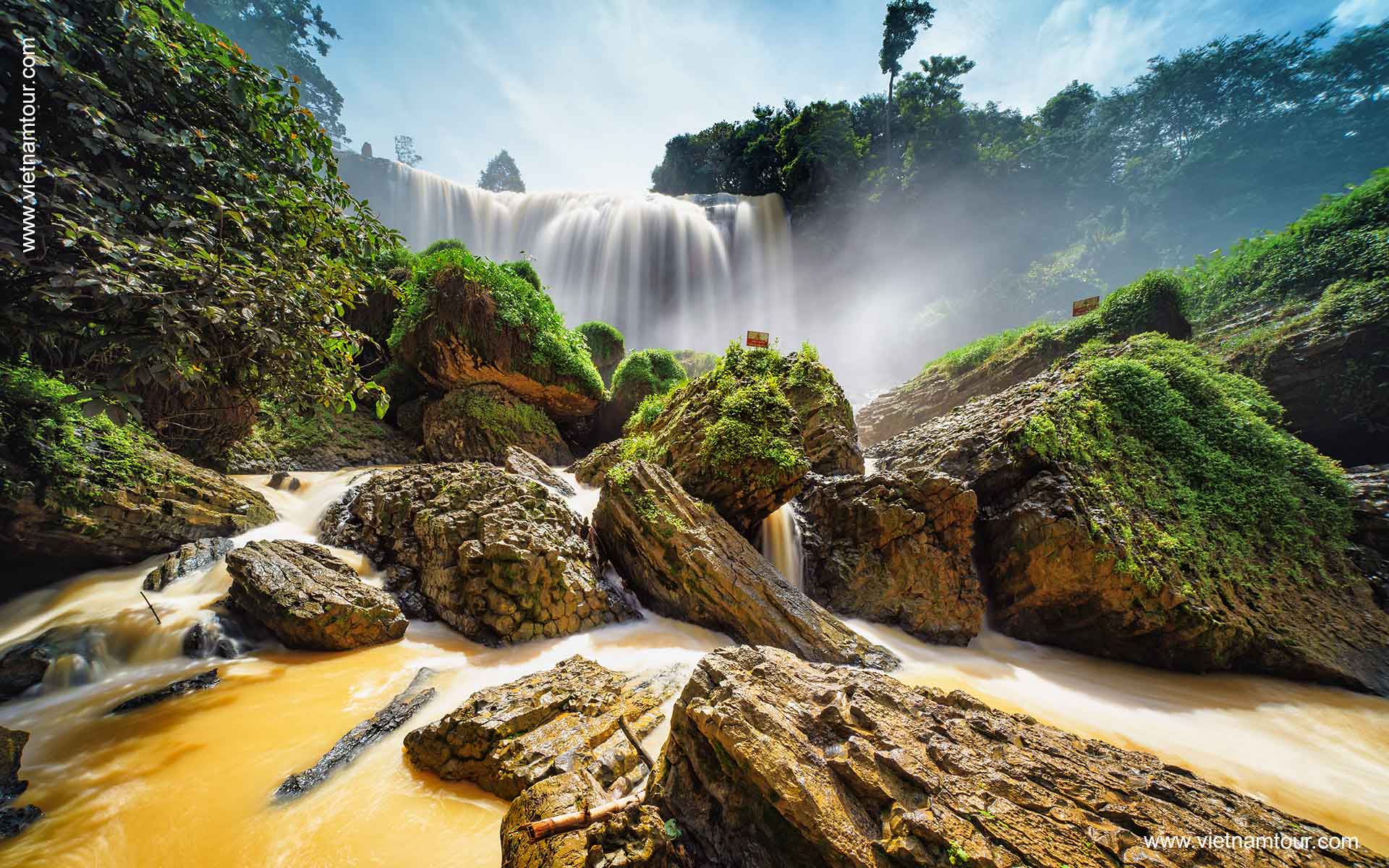
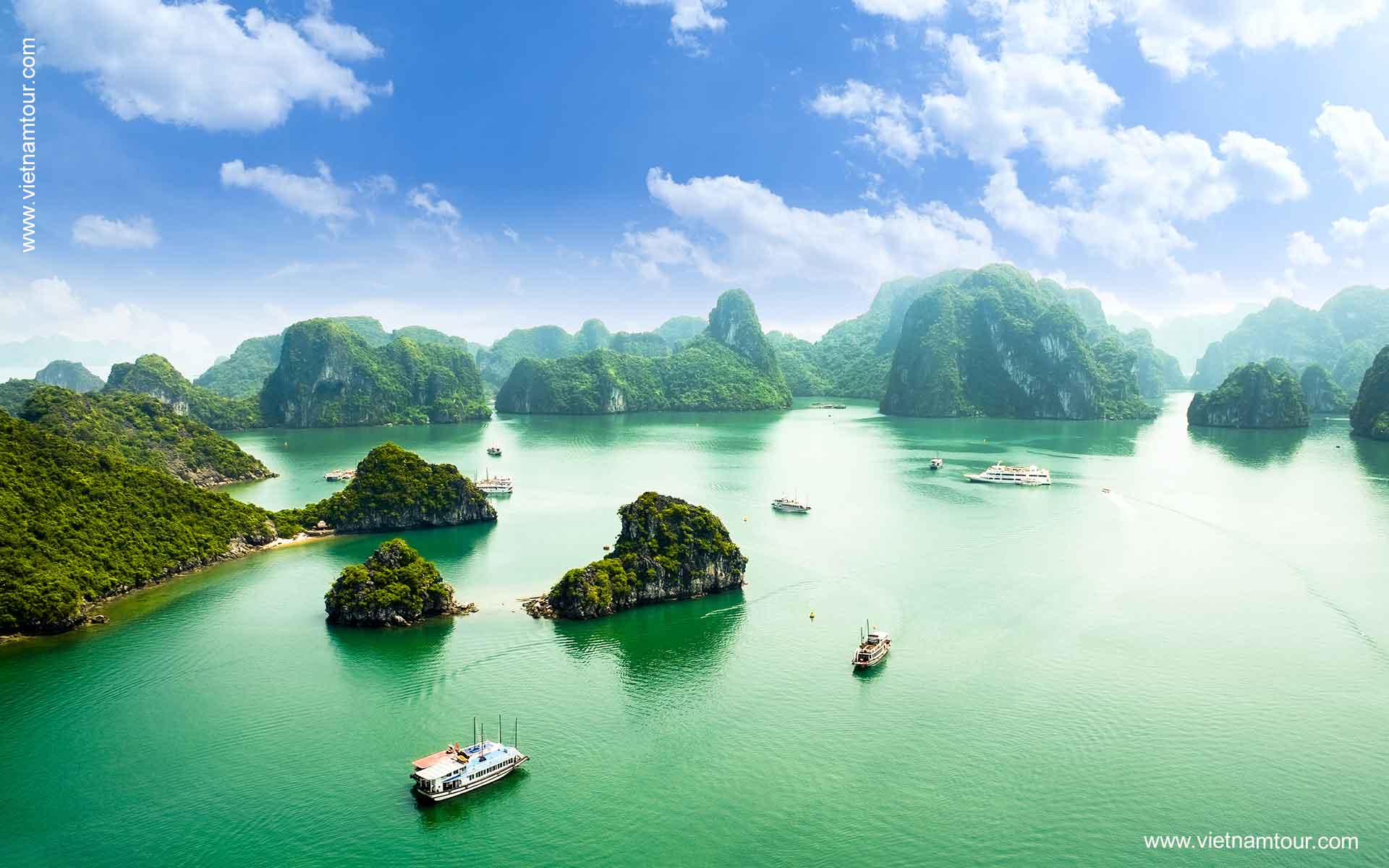
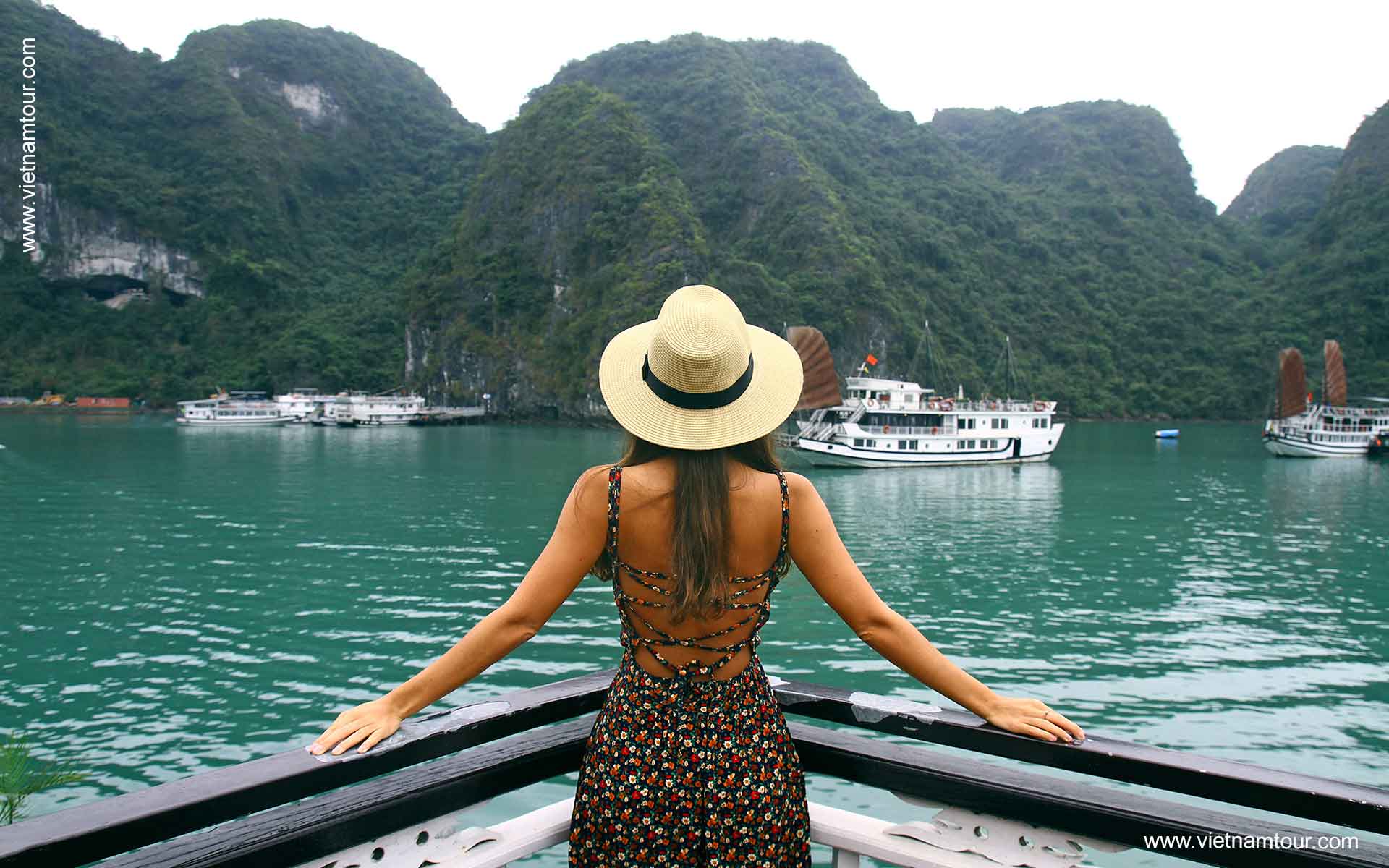
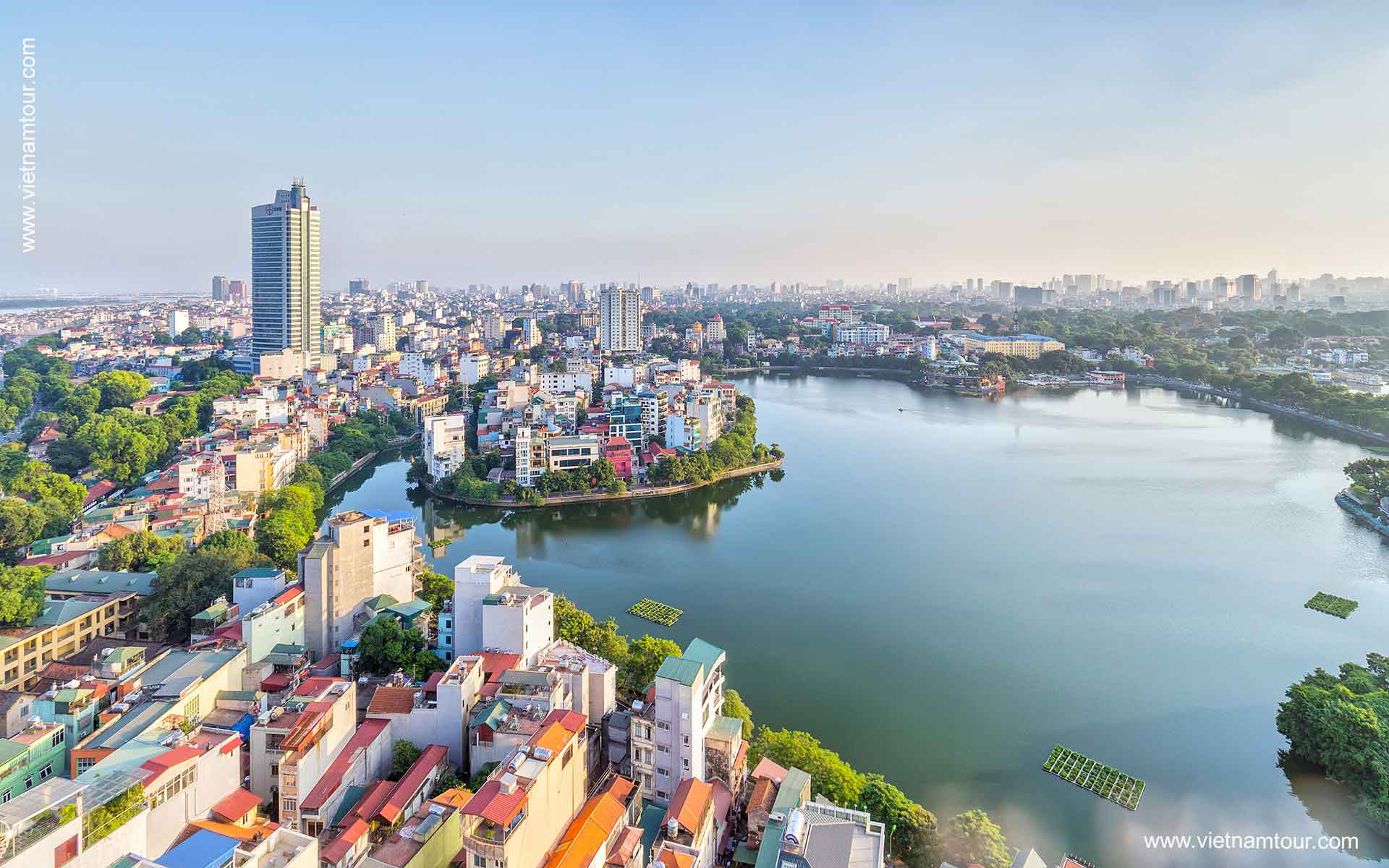
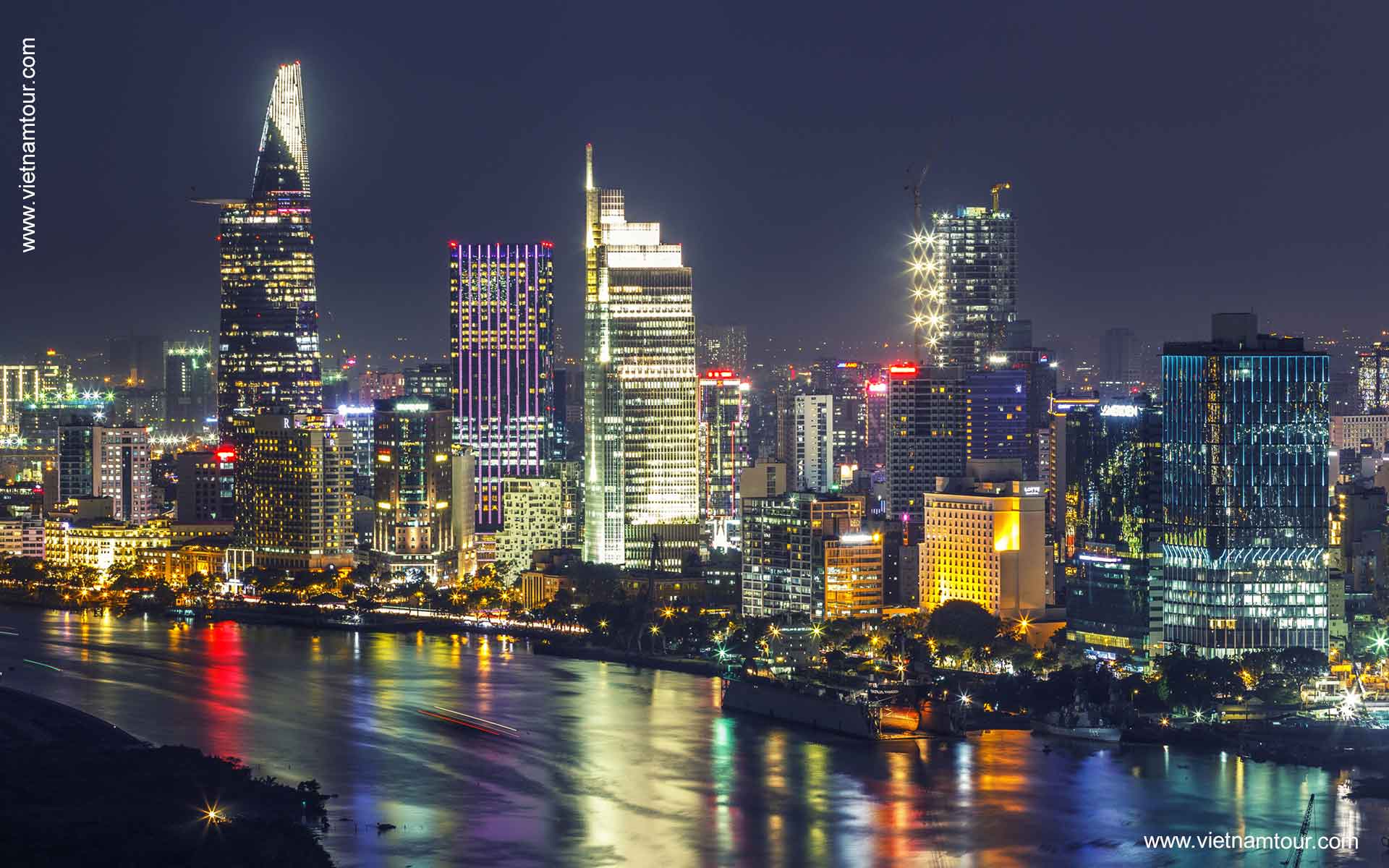
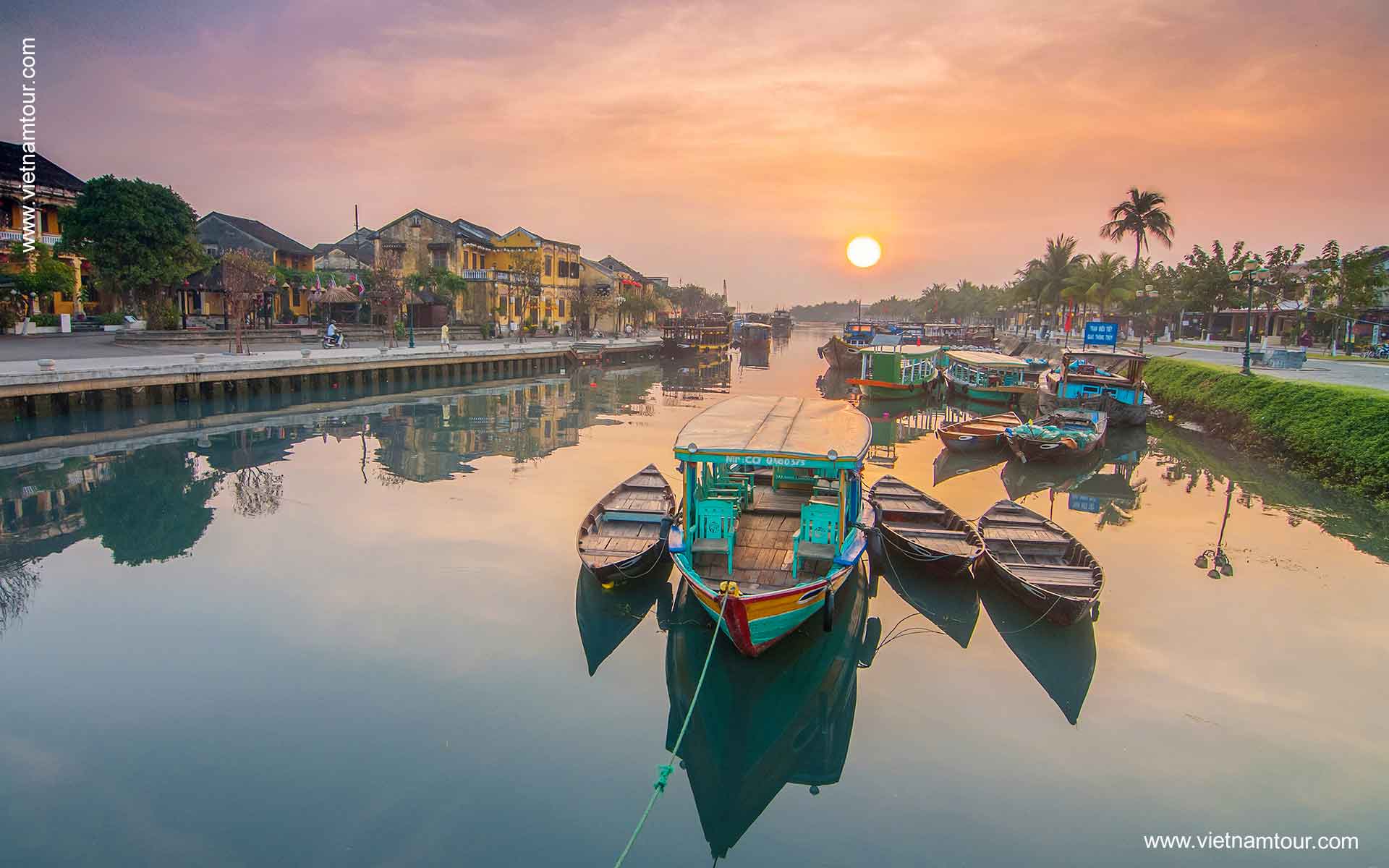
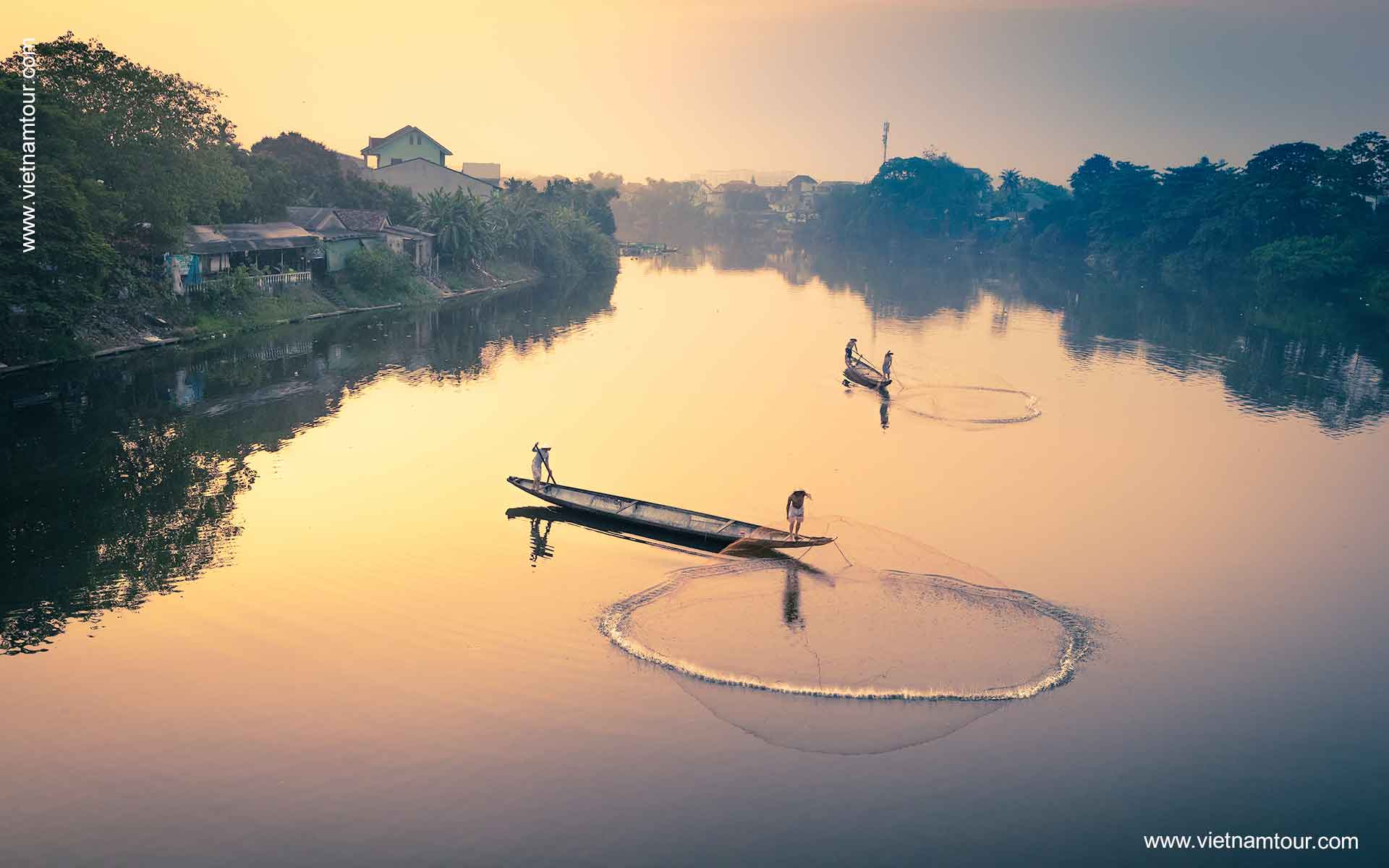
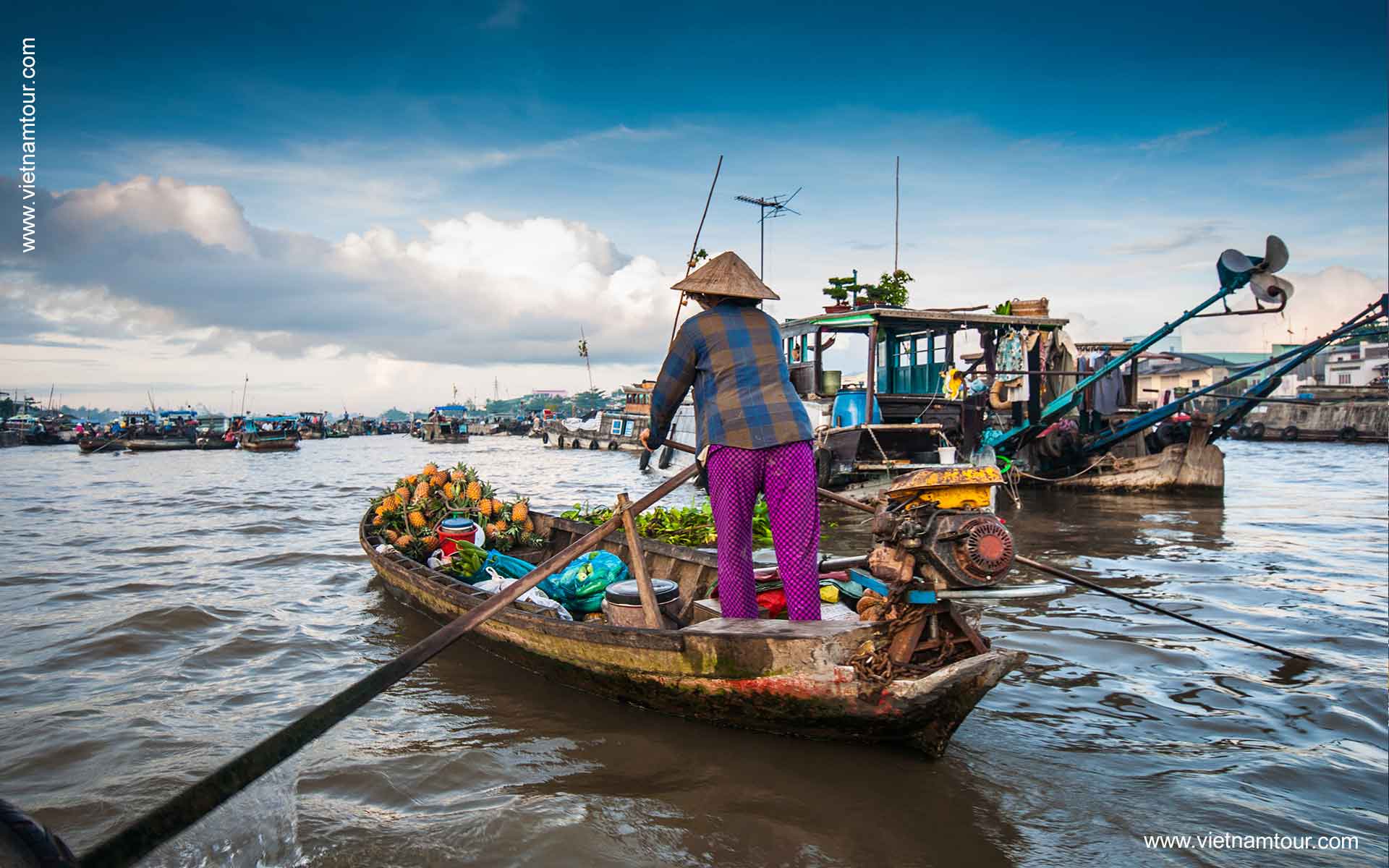
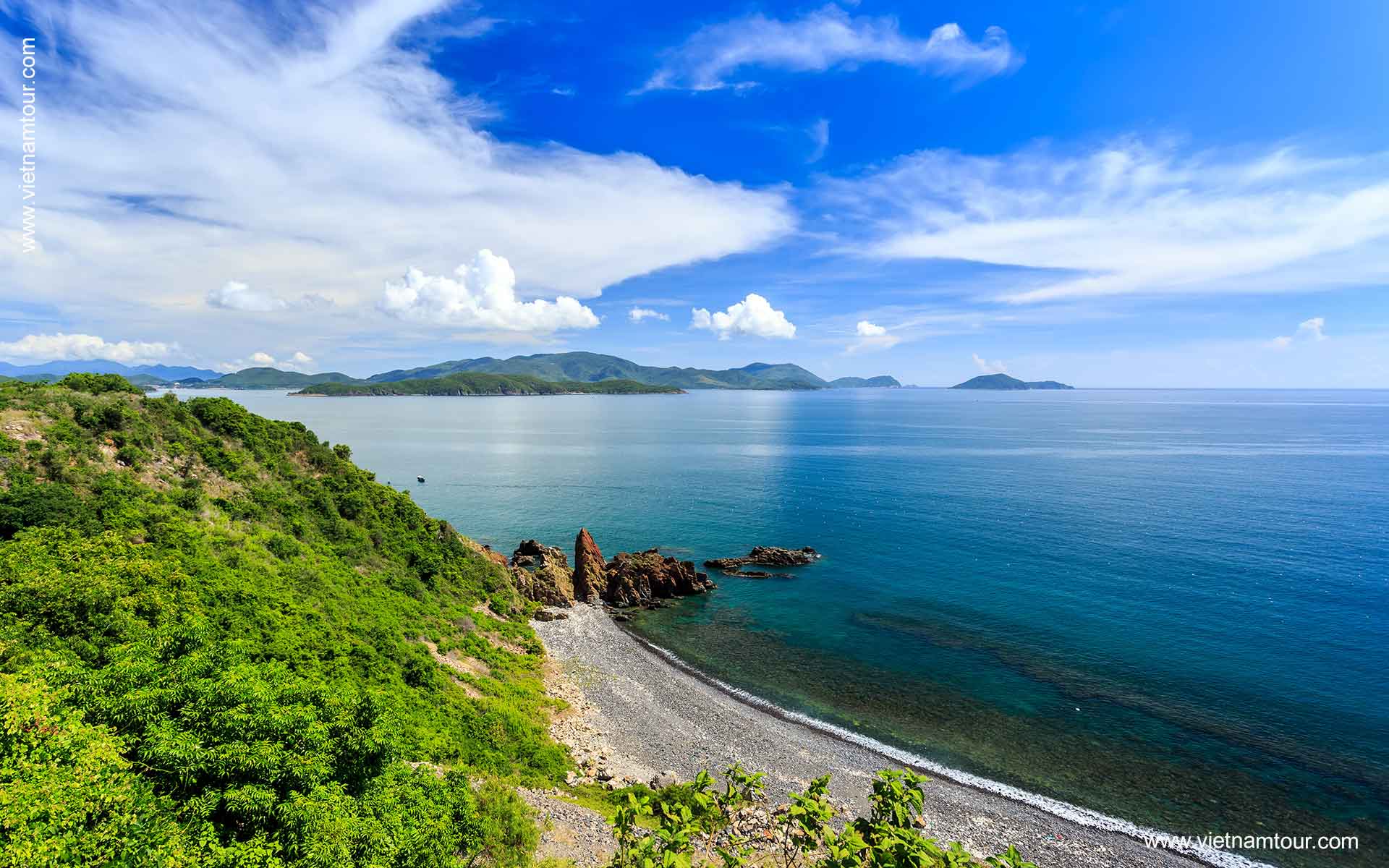
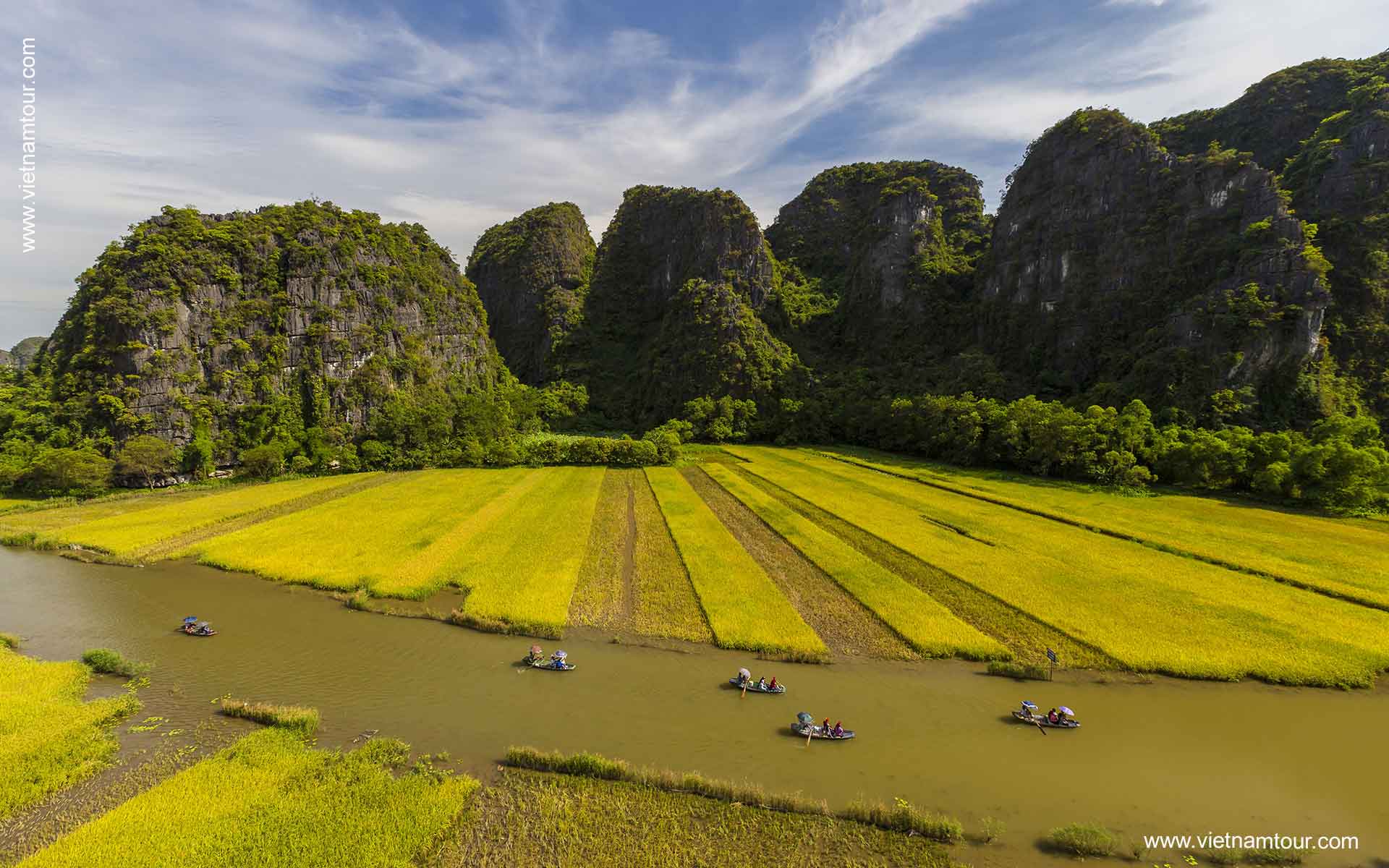
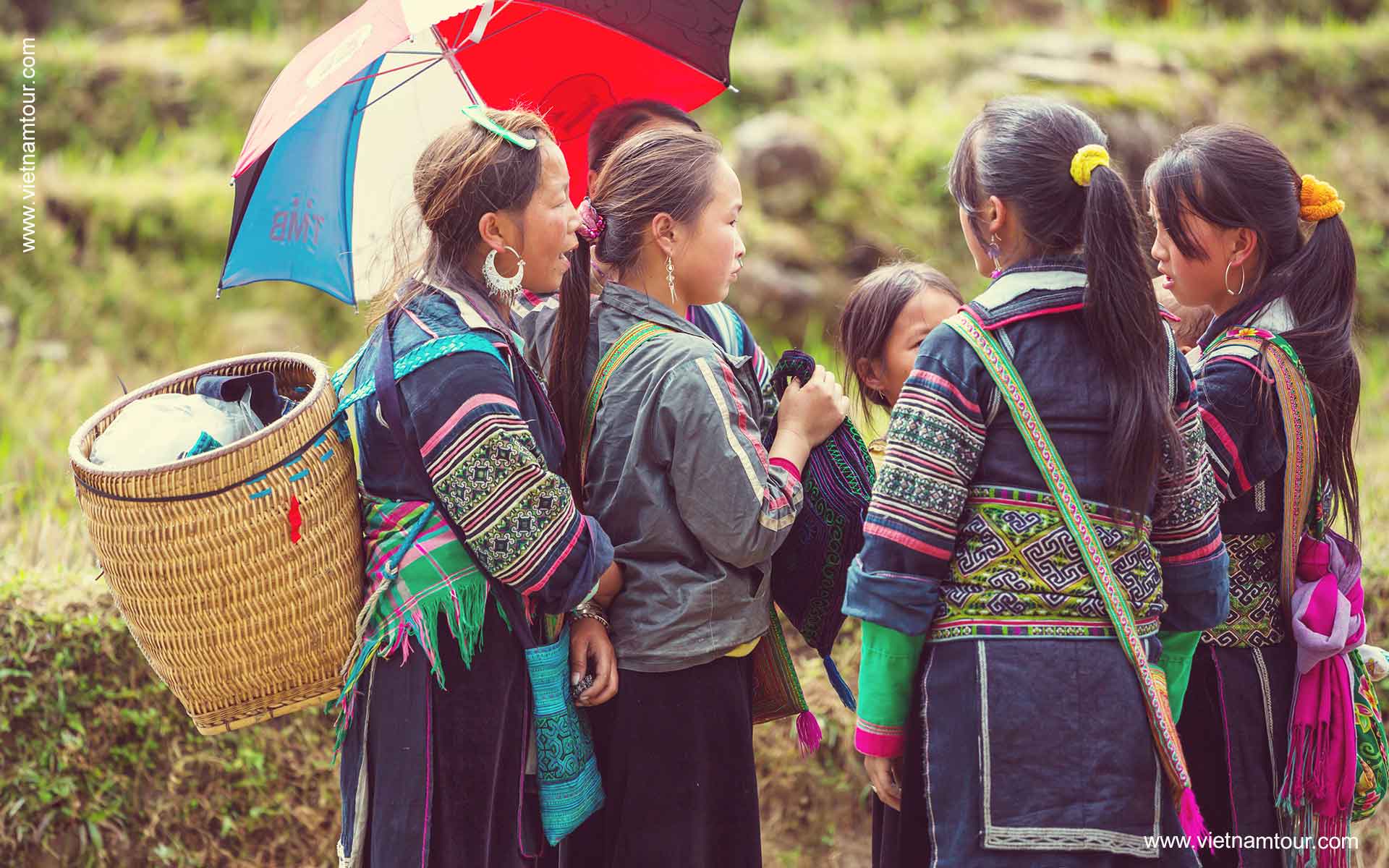
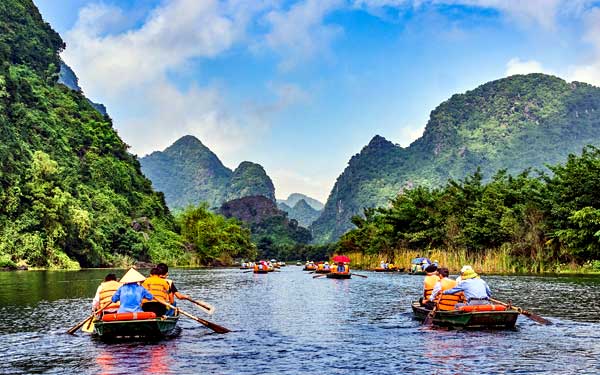
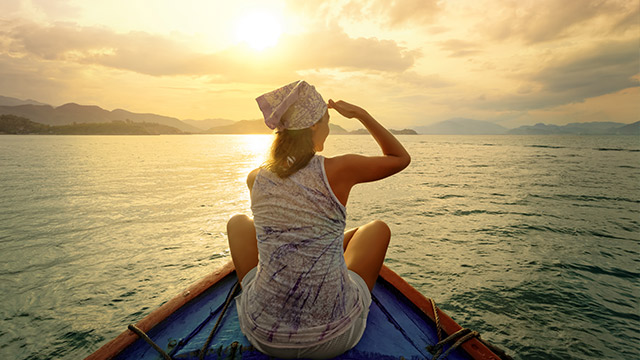
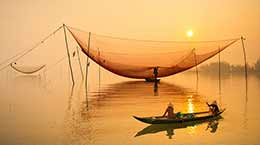
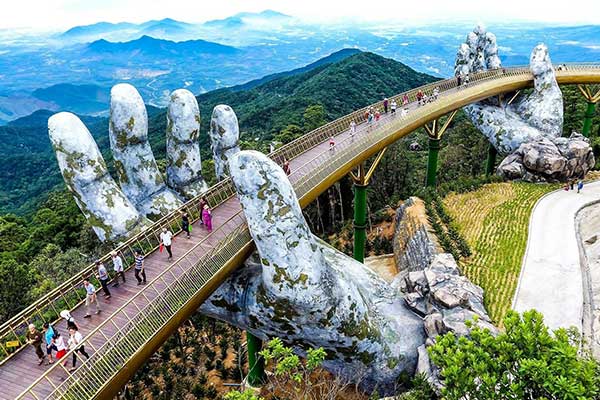
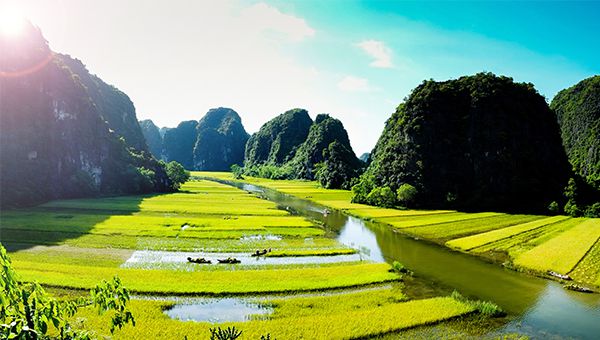
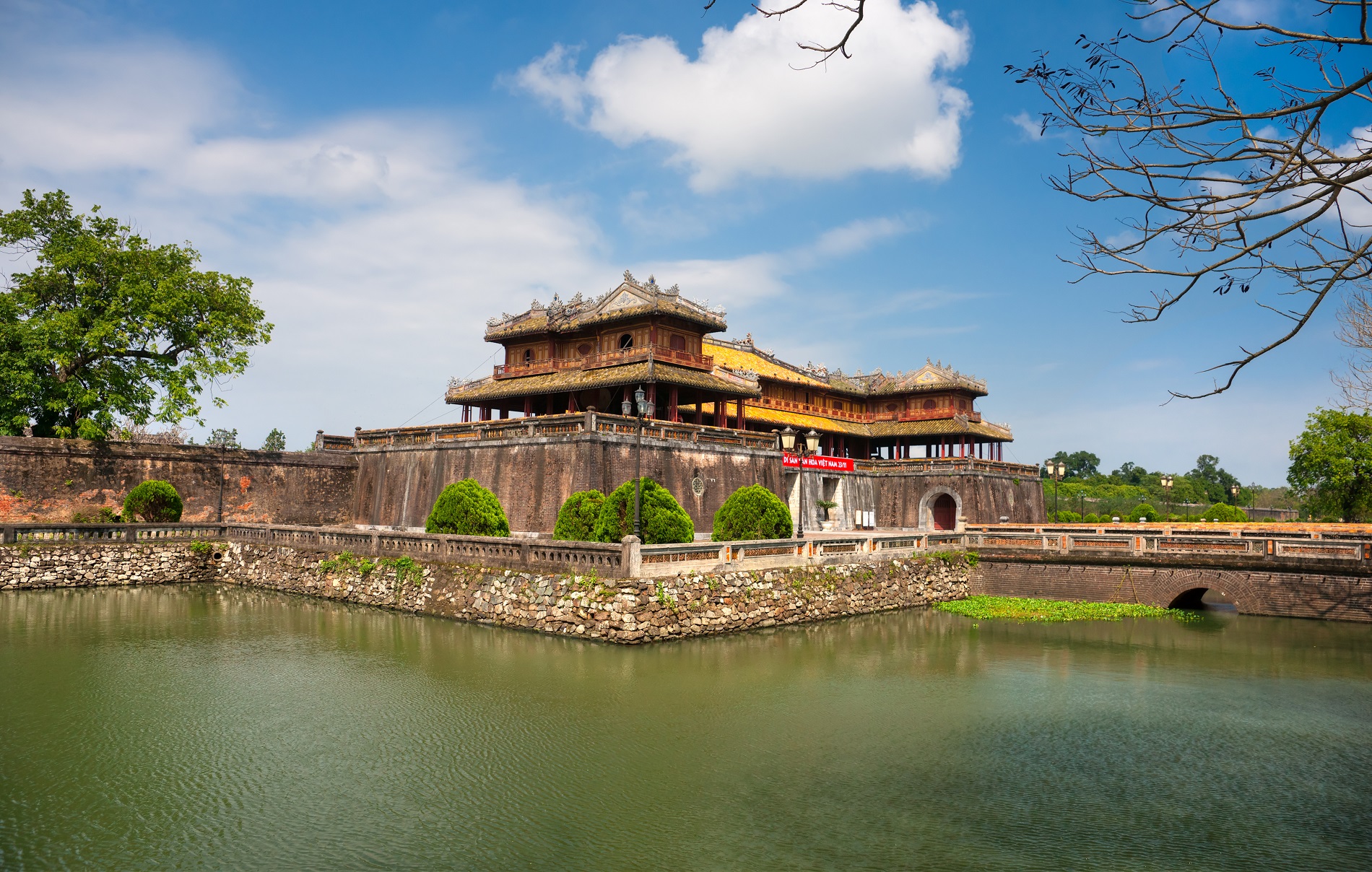
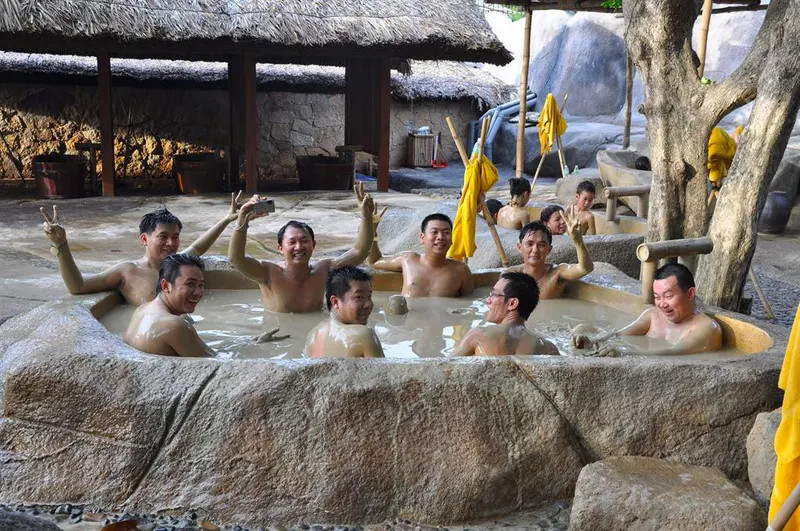
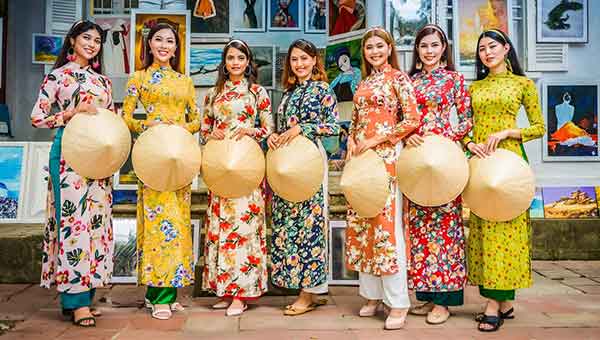
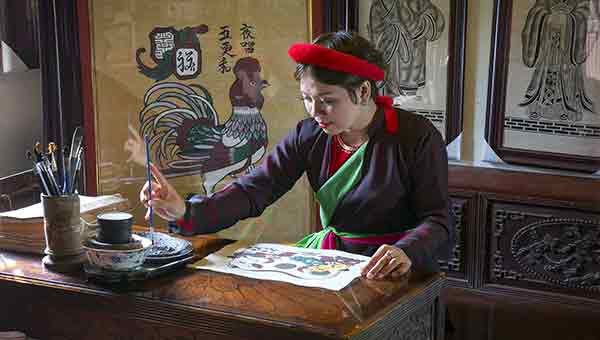
Questions & Answers
Please send me an offer for a 14-day tour by mid or end Nov, 2024 for 3 persons.
Thanks